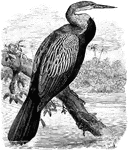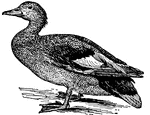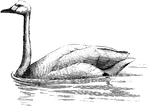Clipart tagged: ‘water fowl’

Wandering Albatros
"The Wandering Albatros of the Southern Oceans is white with narrow dusky undulations above and almost…

Bill of Gadwall
The bill of the Gadwall Duck, showing the comb-like 'teeth' that they are known for.

Tropic Bird Sitting on a Ledge
The Tropic Bird " are chiefly found in the tropical regions of the south; ... this species breeds as…

Curlew
"Numenius arquata, the Curlew or Whaup, breeds freely on the moorlands of Britain; and extends throughout…

Indian Darter
"The Indian Darter (Plotus melangaster) or snake-bird of tropical and subtropical America, ranging northwards…

Dipper
"Cinclus aquaticus, Dippers, the colour above is normally greyish-black or brown; the lower parts are…

European Dipper
"Bill shorter that head, slender and compressed throughout, higher that broad at the nostrils, about…

Great Northern Diver
The Great Northern Diver, Colymbus glacialis, "...is black above, with belts of white spots making a…

Gadwall Duck
The Gadwall (Chaulelasmus streperus) is a widely distributed duck, appearing throughout Europe and N.…

Crested Pelican
"The Crested Pelican or (Pelecanus crispus) is white with rosy or salmon tinge, the primaries being…

Storm Petrel Swimming with Reflection
The storm Petrel "of the Mediterranean and North Atlantic from Greenland to South Africa, which breeds…

Bewick's Swan
"Cygnus bewicki, Buck's Swan, is white with black feet and bill, the basal half of the latter being…